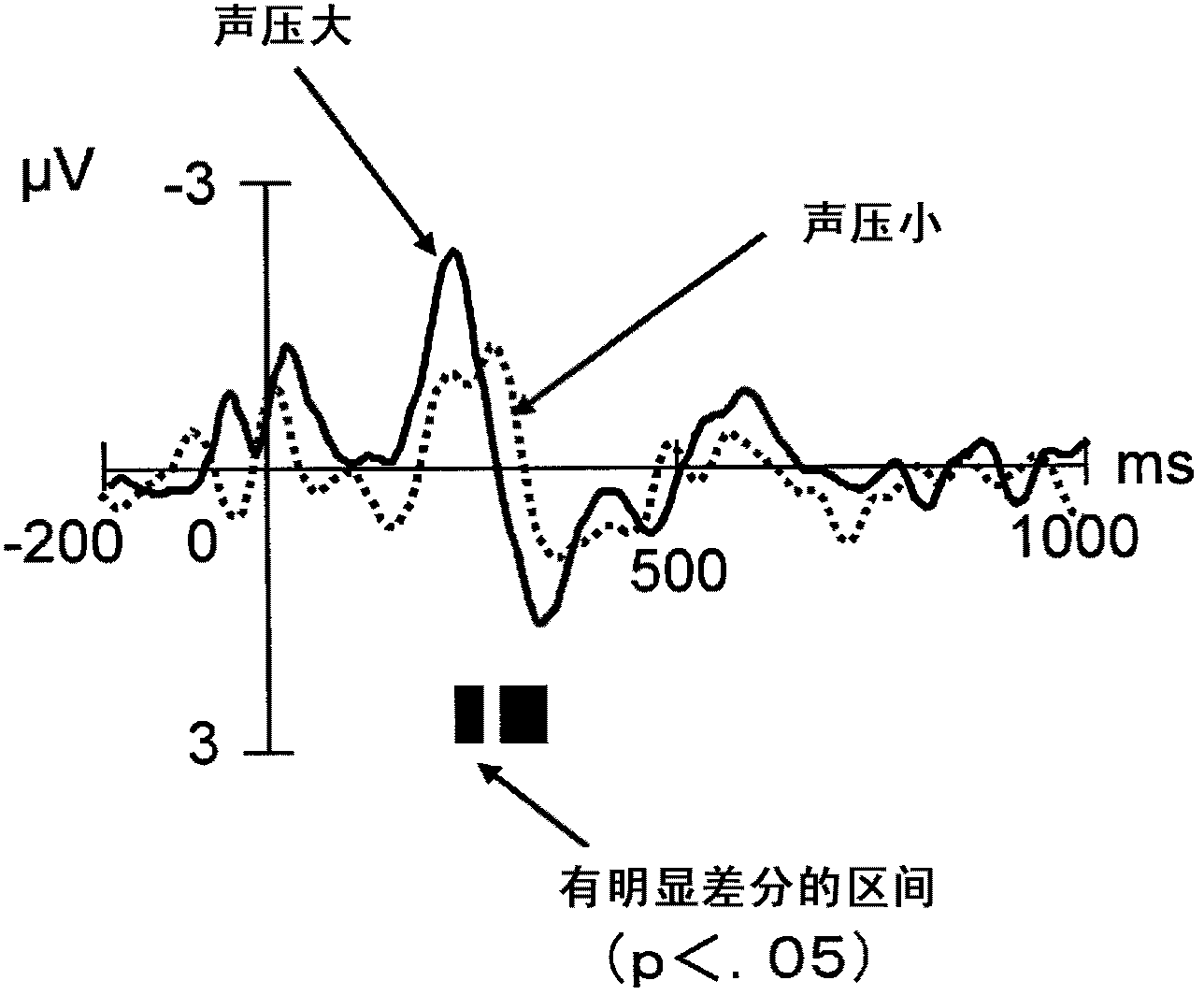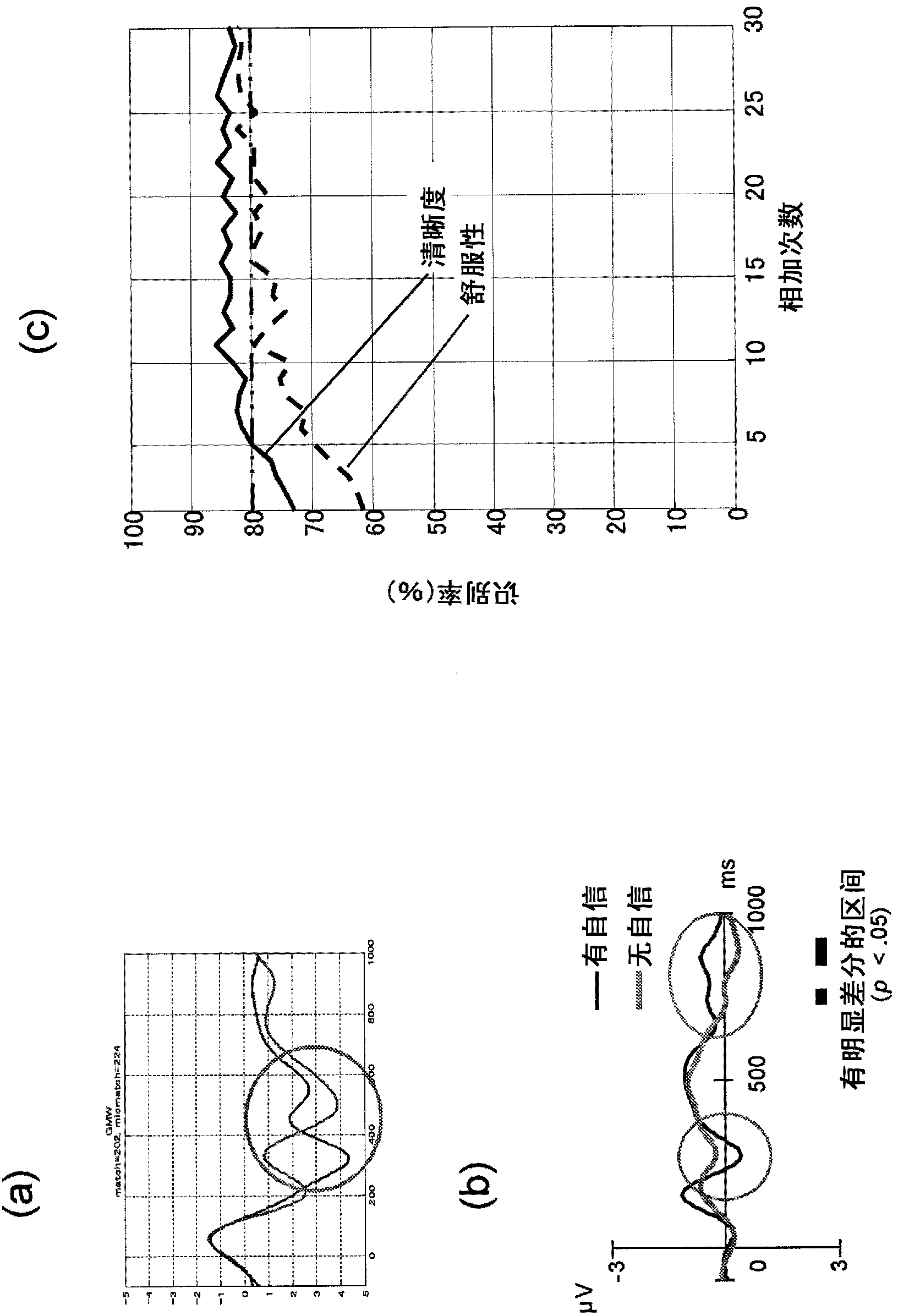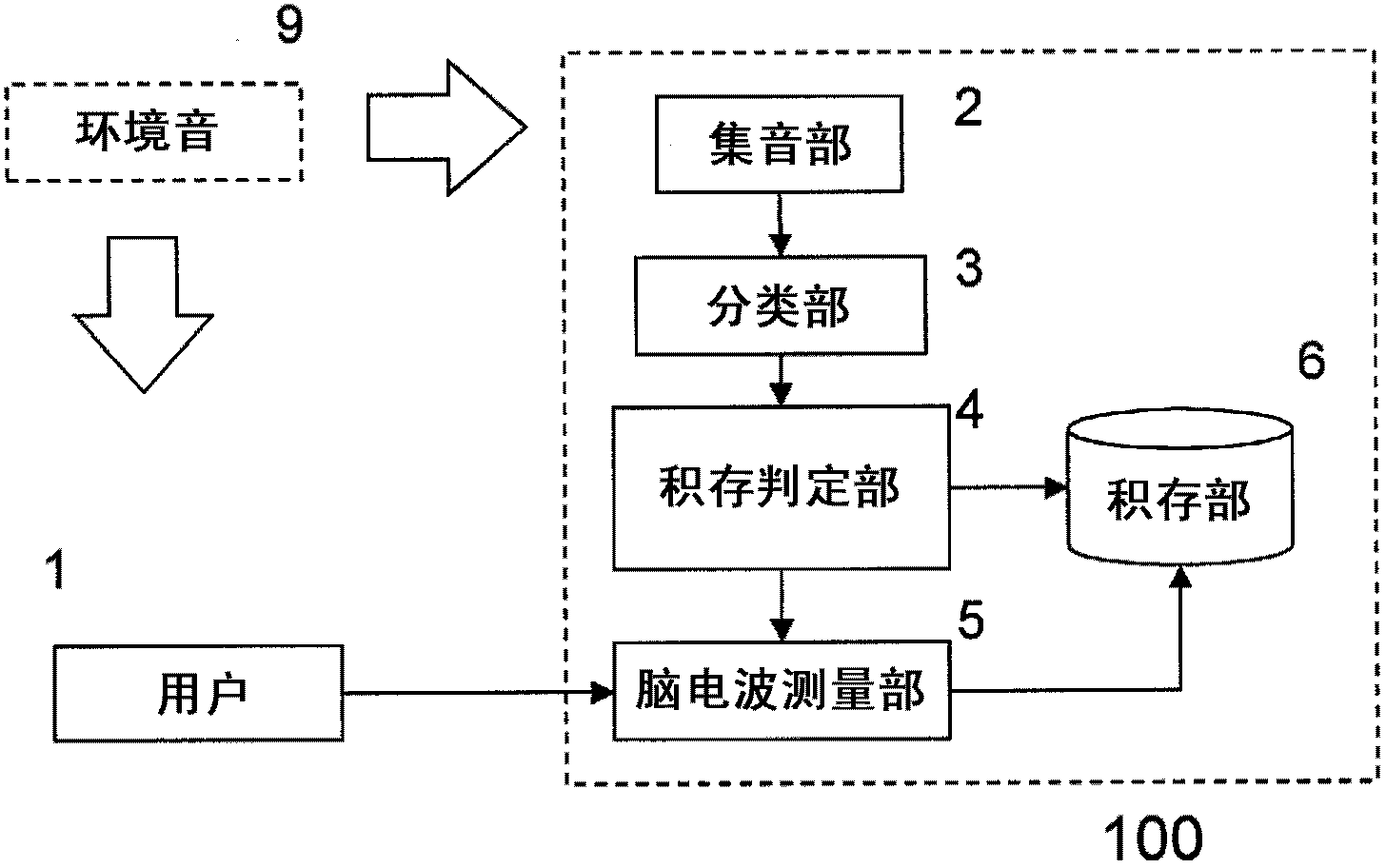Electroencephalograph, hearing aid, electroencephalogram recording method and program for same
A recording device and brain wave technology, applied in hearing aids, hearing aid signal processing, hearing aid adaptation for hearing loss, etc., can solve problems such as insufficient recording of auditory conditions, failure to record, etc.
- Summary
- Abstract
- Description
- Claims
- Application Information
AI Technical Summary
Problems solved by technology
Method used
Image
Examples
Embodiment approach 1
[0085] image 3 The configuration of the electroencephalogram recording device 100 is shown. The electroencephalogram recording device 100 records the electroencephalogram reaction of the user 1 to the environmental sound 9 .
[0086] The electroencephalogram recording device 100 includes: a sound collection unit 2 ; a classification unit 3 ; an accumulation determination unit 4 ; an electroencephalogram measurement unit 5 ; and an accumulation unit 6 .
[0087] The sound collecting unit 2 includes, for example, a microphone and a sound input circuit as described later. The sound collecting unit 2 collects the environmental sound 9 and outputs it to the classifying unit 3 . The sound collecting unit 2, for example, samples and quantizes the collected sound, digitizes it, and outputs it as sound data. The audio data is, for example, 44.1 KHz, 16-bit data encoded by the linear PCM method if the audio quality is equivalent to that of a CD. Furthermore, the encoding method, sa...
Embodiment approach 2
[0177] In this embodiment, an electroencephalogram recording device will be described which, in addition to the configuration of the first embodiment, also has a configuration in which the evaluation of electroencephalograms is performed in the device and the criteria for accumulation determination are corrected based on the result.
[0178] It is known that the difference in the hearing state of users who need hearing aids is greater than that of normal hearing people, and the necessary part of the data may not be able to be fully accumulated for the number of times of accumulation of the volume of the sound originally set. Therefore, when a certain level of electroencephalogram data is accumulated, simple evaluation is performed, and the accumulated amount is corrected using the result, thereby enabling correspondence with users of various auditory states. If this function does not exist, it is necessary to check the accumulated data at a hearing aid store, first confirm that...
Embodiment approach 3
[0203] In the present embodiment, it is assumed that the adjustment is automatically performed inside the hearing aid by incorporating a data recording function and an evaluation function in the hearing aid main body without performing fitting by an expert at a hearing aid store.
[0204] Figure 19 The structure of the hearing aid 110 of this embodiment is shown. The hearing aid 110 includes, for example, the electroencephalogram recording device 100 and the hearing aid unit 101 according to the first embodiment. exist Figure 19 in, for image 3 The same structural elements use the same symbols, and descriptions are omitted. The configuration of the present embodiment is configured by adding the hearing evaluation unit 8 and the hearing aid unit 101 to the configuration of the first embodiment.
[0205] The hearing evaluation unit 8 is a part that performs hearing evaluation using the data of the accumulation unit 6 . basically implement the Figure 13B or Figure 14 ...
PUM
 Login to View More
Login to View More Abstract
Description
Claims
Application Information
 Login to View More
Login to View More - R&D
- Intellectual Property
- Life Sciences
- Materials
- Tech Scout
- Unparalleled Data Quality
- Higher Quality Content
- 60% Fewer Hallucinations
Browse by: Latest US Patents, China's latest patents, Technical Efficacy Thesaurus, Application Domain, Technology Topic, Popular Technical Reports.
© 2025 PatSnap. All rights reserved.Legal|Privacy policy|Modern Slavery Act Transparency Statement|Sitemap|About US| Contact US: help@patsnap.com



